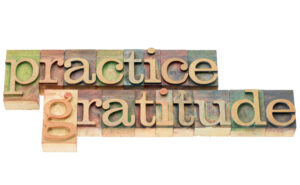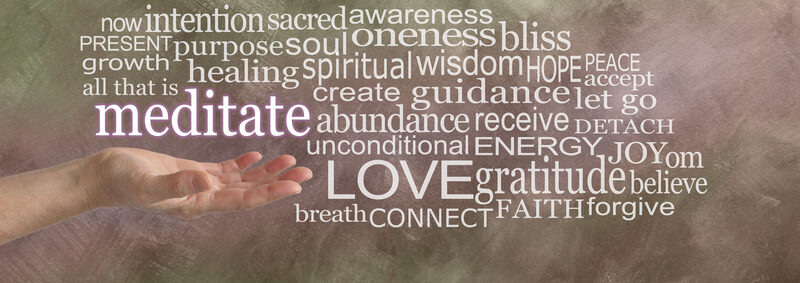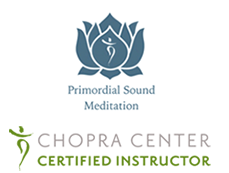What is the Best Way to Meditate? Part Two
The best way to meditate is to use a method that makes you look forward to your practice. This is part two of a three-part series.
In my first blog post on this topic, we explored four methods of meditation; affirmations, lovingkindness meditation, mindful breathing, and progressive relaxation. Meditation is just a tool. Techniques abound. Explore them. When you find one that resonates with you, practice with that method.
How do you find the best way to meditate? Continue reading!
 We are all unique and we all respond to different methods at different times. Any vehicle can take you down the road. The vehicle you travel in is less important than the fact that you are on your way toward the destination.
We are all unique and we all respond to different methods at different times. Any vehicle can take you down the road. The vehicle you travel in is less important than the fact that you are on your way toward the destination.
In the same way that there are many ways to become physically fit, there are many ways to find greater peace, serenity, calm, and connection to your higher self.
Any method that appeals to you is a good match for you.
One method of exercise is not more valid than another. They are all vehicles to make you more fit. Similarly, whatever meditation method calls to you is the best one for you to use. Simply explore several methods with an open mind and notice which one helps you achieve a feeling of calm, peace, and serenity.
Meditation is a very important part of my life. I expect to meditate for the rest of my days. Therefore, I find that using a variety of methods keeps my practice vibrant and fresh. In the same way that cross-training with different ways of exercising is beneficial for your body, keeping your practice vital is important for long-time practitioners of meditation.
Meditation allows us to settle into quieter levels of awareness until we experience the pure silence within.
There are thousands of methods to achieve the desired state of stillness and silence.
In this blog post, I will introduce you to three more of my favorite methods; a brief meditation to drop into stillness; a meditation designed to help you name your emotions, and an end-of-day gratitude meditation.
Drop-In and Still the Mind Meditation
As you go about your day, it can be very helpful to disconnect from the fray and drop into a place of stillness and silence for a few minutes. When you take time to do this, you will appreciate connecting to that calm center within yourself. This will ground and center you.
If you are like me, you may have experiences where your mind goes on autopilot. This can result in feelings of anxiety or rapid thinking.
The practice of stilling your mind will help you settle back into calm awareness.
When you are focused and relaxed, you are more productive and able to better attend to your experience. Experience the 7 minute Drop Into Stillness Meditation with me.
Another hugely beneficial meditation technique is the practice of naming your feelings or emotions.
 Imagine your thoughts as icebergs. The thought is what we see above the surface of the water. Beneath the surface, the much larger part, is an emotion or feeling– or perhaps several emotions or feelings.
Imagine your thoughts as icebergs. The thought is what we see above the surface of the water. Beneath the surface, the much larger part, is an emotion or feeling– or perhaps several emotions or feelings.
When you are at your best, you feel positive, happy, and confident. You are open, centered, calm, and optimistic.
If you are like me, when you are not at your best, your feelings and emotions are the opposite of those listed above. Negativity, self-doubt, irritability, and pessimism are typical.
I have had the chance to study with the psychologist Dan Siegel. He refers to this practice as “name it to tame it.”
Siegel explains that naming our emotions lessens their potency and decreases the burden they create.
For example, thinking about a long to-do list may bring emotions like anxiety, or guilt. If we’re thinking about a disagreement, the underlying energy might be sadness or a feeling of abandonment.
What emotions are beneath your thoughts right now? If you are able to, name these emotions out loud, or write them down.
Naming the emotion can reduce the tendency to get lost in the story around the feeling.
For example, “I feel sad and I don’t know what to do. What if I tried talking to her?”
If you can gently turn away from the story to the emotion and name the feeling, that can reduce the potency. If you can say to yourself, “I feel sad,” for example, you may also notice other emotions lurking around that might feel less difficult. There is space for all emotions to coexist.
It is also helpful to see where you may be feeling the emotion in your body.
And, if you notice any feelings within your body, you simply observe them.
Often in this practice, you will also hear any messages you need to hear as you listen to your body. For example, you may sense or hear: “It’s safe to feel this emotion.”
This gentle practice teaches you to honor your emotions and listen to your body.
Experience the 12-minute Naming Your Emotions Meditation with me.
There are multitudes of mindful practices. Mindfulness is the practice of awareness of the present moment, which allows us to stop thinking about the past and future.
One of my favorite mindful practices is taking time for an end-of-day gratitude meditation.
 This meditation is best done in the late afternoon or early evening when you are free to relax and release any lingering tension or stress leftover from the day.
This meditation is best done in the late afternoon or early evening when you are free to relax and release any lingering tension or stress leftover from the day.
In this meditation, you allow your mind to travel over the events of the day. Letting your day wash over you, disconnect from any lingering responsibilities, any stresses about how your day went or how tomorrow will go.
You are here to find gratitude for the day. The meditation asks you to bring to mind everyone interacted with, and as you do so, express gratitude for these moments of connection.
Then, this meditation guides you to connect with your body. Think of everything it’s done today to keep you safe and healthy; all of the processes that take place. And then you sit in thankfulness for everything that your body has done for you today.
You consider the food that you’ve eaten today; the nourishment that you’ve given your body and appreciate every ounce of energy that your body has received.
You think about the memories that you made today and allow your mind to wander over any prominent emotion that you experienced. Each emotion contributes to your story.
And finally, you express gratitude for all of the skills that you utilized today; appreciating these gifts and trusting that you are growing in your awareness.
And finally, you end the meditation by coming back to the present moment and allowing the day to dissolve.
Experience a 12-minute End of Day Gratitude Meditation with me.
I am passionate about helping people find meditation methods that resonate with them. I would love to hear about your experiences.
If you would like to more fully explore guided meditation I invite you to enroll in my free class; Enrich your Life with Daily Meditation.
Namaste,
Jane
Thank you for reading this post. Please share it with anyone who is interested in learning more about meditation.
Find out more about my journey through my book on Amazon: Vision Quest; A Journey to Happiness by Jane Ramsey.
This is my first blog post in the series titled What is the Best Way to Meditate.
Read how Creativity is like Meditation here.
Learn the Benefits of Pranayama.
Practice gentle chakra tuning
Interested in the Universal Laws? The Blogs for each of the twelve Laws are found below:
Divine Oneness here.
Vibration here.
Correspondence here.
Attraction here.
Inspired Action here.
Perpetual Transmutation of Energy here.
Cause and Effect here.
Compensation here.
Relativity here.
Polarity here.
Rhythm here.
Gender here.
To find out more about me and our course offerings, please click the links above the Blog Post or here:
Browse courses by Jane Ramsey
Find out more about Jane Ramsey
Learn about Jane Ramsey’s Book; Vision Quest; a journey to happiness
Sign up here to receive future blog posts.







